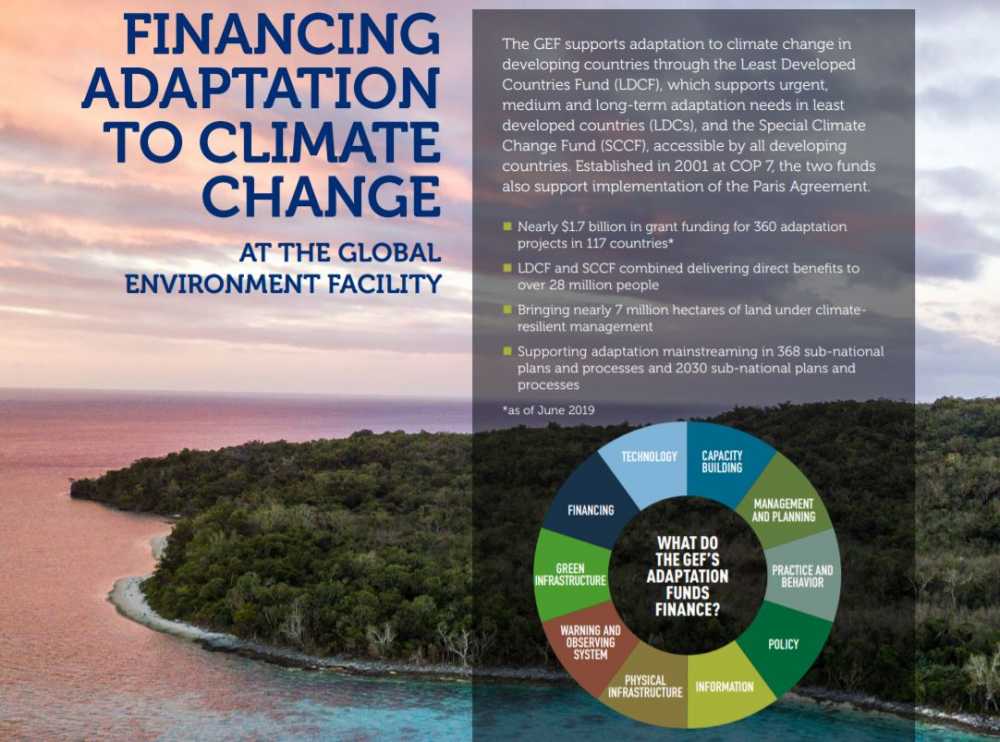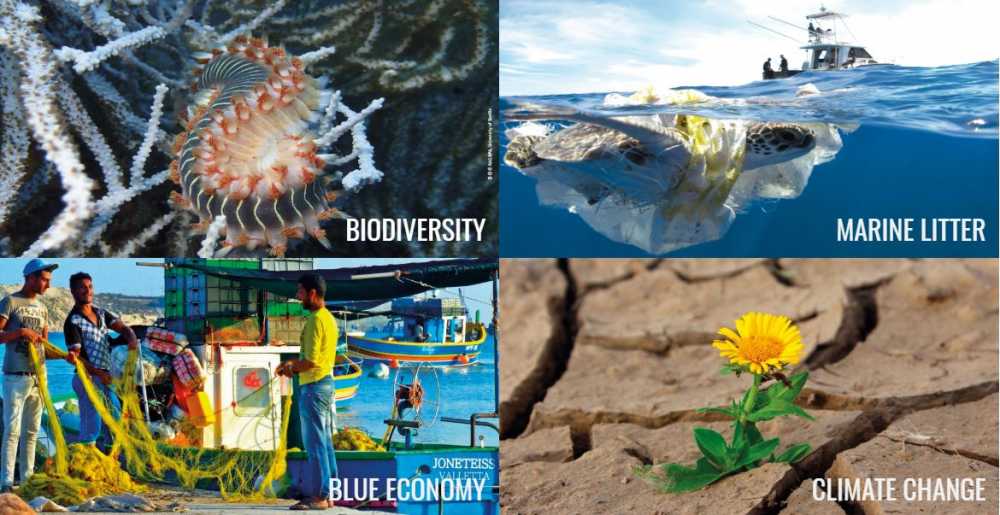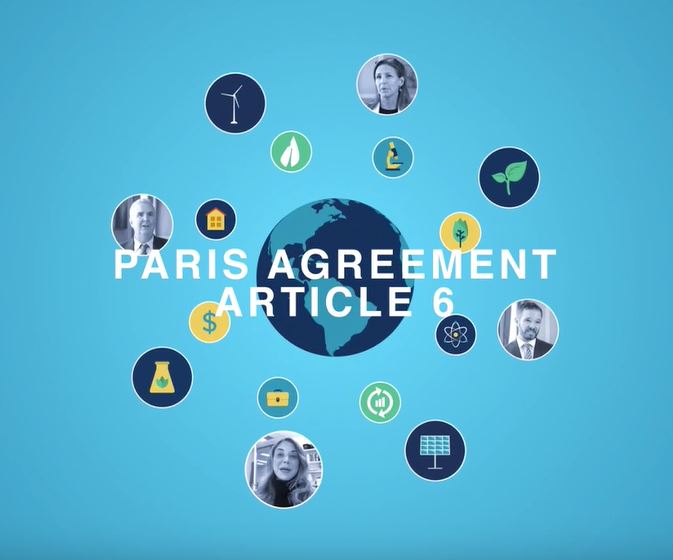
One of the steepest challenges climate advocates face while working to raise awareness of the climate crisis and spur tangible on-the-ground action is the simple task of communication. How can we effectively translate the outputs of the scientific community for the public in a way that is faithful to the findings but also viscerally compelling and easy to internalize? This question is at the heart of Maxwell Boykoff’s new book, titled Creative (Climate) Communications: Productive Pathways for Science, Policy and Society.
The Director of the Center for Science and Technology Policy Research at the University of Colorado Boulder’s Cooperative Institute for Research in Environmental Sciences, Boykoff approaches climate communication with an open mind but a scholarly eye, substantiating each of his conclusions with numerous real-world case studies. Boykoff says he wrote Creative (Climate) Communications to “help us see through the clutter of disparate research and practice in these areas and provide some helpful guidance for ongoing work to effectively move forward with climate action.”
A persistent theme in the book is the idea that “making [climate change] real” for those not yet directly impacted by the climate crisis demands creative—even artistic—modes of engagement. “Creative communications entail work to stir feelings and conjure emotional ways of knowing about climate change,” Boykoff writes. This is the approach we at Connect4Climate take ourselves, convening people and raising awareness through film, music, fashion and more. Boykoff stresses the importance of communicating in ways beyond raw data and academic explication—in order to truly sway climate contrarians, he says, advocates must connect with them on a personal, emotional level.

‘British Persuasion’ created & performed by Joey Filmanowicz, Kyle Fowler & Jules Murtha. From the April 2019 'Stand Up for Climate Change' live comedy show at CU Boulder. Credit: Lianna Nixon
Boykoff himself is no stranger to work in novel climate communication. He co-founded at the University of Colorado a multidisciplinary project called Inside the Greenhouse, “designed to facilitate and support creative storytelling about issues surrounding climate change through video, theatre, dance and writing to help connect wider and new audiences to climate change in resonant and meaningful ways.” He details in the book some of the many creative approaches his students have come up with under this initiative.
From cover to cover, Creative (Climate) Communications offers a humane and holistic look at the climate crisis. Its open-mindedness and embrace of a case-by-case “silver buckshot” approach to successful climate communication is both admirable and essential in our contentious and misinformation-rich modern world. This is invaluable reading material for anyone passionate about expressing effectively the dangers our planet faces, and it is now available for purchase online.
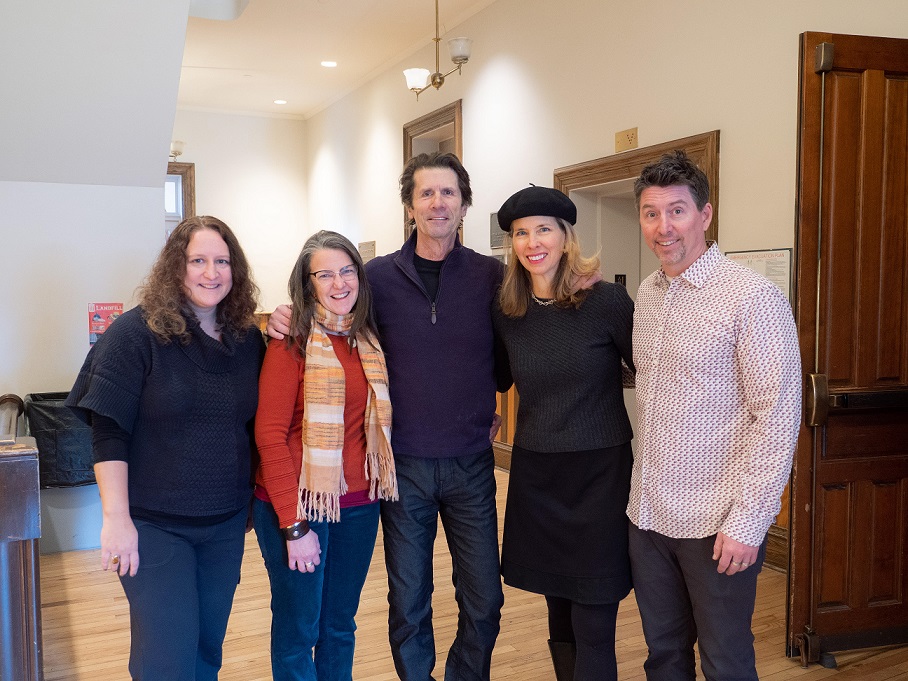
Inside the Greenhouse Co-Directors with photographer James Balog: Phaedra Pezzullo (far left), Rebecca Safran (middle left), James Balog (middle), Beth Osnes (middle right), Max Boykoff (far right). Credit: Patrick Chandler
Banner/thumbnail image courtesy of Fabio Marciano, Pixabay.
GEF Live is a partnership between the Global Environment Facility and the World Bank Group’s Connect4Climate global partnership program. The interactive media hub will be in session throughout the 57th GEF Council at the World Bank Group HQ in Washington DC, from December 16-19, 2019. GEF Live is an opportunity for Council participants and invitees to engage in conversation with a global online audience and share ideas and solutions to some of our planet’s most urgent environmental problems.
Through Connect4Climate’s online platforms, GEF Live will host a series of live-streamed interviews on Facebook and Twitter during the four-day event. The program will include GEF’s government partners, agency representatives, civil society leaders, and Global Environment Facility specialists on climate change, oceans, biodiversity, illegal wildlife trade, and more.
You can follow the event on Twitter and Facebook—the latest updates, key moments and the complete live streaming of the four days event—by using the hashtag #GEFLive.
Follow Along LIVE on Facebook Live
Above graphic courtesy of the GEF's 2019 report "Financing Adaptation to Climate Change." Banner and thumbnail images courtesy of the GEF website.
We take our cues about what’s important from what we hear our family, friends, colleagues and neighbours talk about.

On December 2-5, Naples, Italy will host the “COP of the Mediterranean,” an international climate event focused on safeguarding the environmental richness of the Mediterrean Sea. This conference of the parties to the Barcelona Convention will bring together climate leaders from across the region for a much-needed discussion of how best to preserve the Sea’s bountiful resources and diverse wildlife.
Italy’s Minister of the Environment, Land and Sea Sergio Costa has noted that “in addition to being the sea with the most consistent trade in the world,” the Mediterranean “is also a hotbed of important biodiversity.” Costa especially looks forward to engaging the youth of Naples—a city that has for centuries thrived on the Sea’s banks—with events tied to the conference. A firm believer in the power of youth to make a difference, Costa refers to them as “the educators of the adults.”
Connect4Climate is proud to be attending the conference and supporting the outreach around it through several key events including a beach cleanup workshop and showcases of environmental music and art. Our team can’t wait to connect with climate-conscious youth and get them involved in the push for a sustainable future!
For a full rundown of the exciting activities we’ve got planned, check out the program below. You can also follow us on Twitter and Instagram and join the conversation online with the hashtags #COP21Napoli, #BarcelonaConvention, #SaveTheMediterranean, #WeAreAction, and #IoSonoAmbiente!
Images courtesy of the COP21-Naples offical website.
C4C Events Program
Monday 2 December, 9.00 am-1.00 pm
Morning beach cleanup workshop and restoration of the coastal area of San Giovanni a Teduccio in collaboration with local NGO ‘Let's Do It! Italy.’
About 150 students from local schools will be trained in advance and will work together to clean the beach. This activity will be accompanied by the installation of new benches and by the repair of beachside showers.
The restoration of the area will include the creative recycling of beach trash into musical instruments. Led by Maurizio Capone of the eco-minded band Capone & BungtBangt, youngsters will learn to fashion instruments from the rubbish and make music with them, transforming something ugly into something beautiful.
Tuesday 3 December, 7.00 pm-11.00 pm
Music for the sea: An eventful evening of music and climate positivity.
Subsonica singer-songwriter and Italian X Factor judge Samuel Umberto Romano, known for his commitment to protecting the natural world, will join forces with the artists of Napoli Segreta to DJ a night of music that will empower fans to take meaningful climate action. Topical videos will be screened throughout the event, including the premiere of the footage captured at the beach cleanup in San Giovanni a Teduccio as well as video profiles of Neapolitan youth activists and a selection of other content on the importance of safeguarding the Mediterranean.
Throughout the event, participants will be able to create personalized t-shirts with screen-printed images inspired by the theme of the sea. Equipped with a mobile printing unit, a small booth will be set up for the sustainable printing of the shirts. Guests will have the opportunity to choose a color scheme and one of two available graphics for their organic cotton shirts and print them in real time with the guidance of onsite staff.
Wednesday 4 December, 5.30 pm-7.30 pm
Climate engagement through theatre: In Naples’s eastern suburbs, an abandoned space became a theater for the community: the NEST. On the evening of December 4th, the NEST’s stage will be animated by a performance of “Fuoco Fatuo”—a story filled with music, dance and magic and rich with environmental symbolism— followed by a theatrical monologue from actor Adriano Papaleo.
Photographs by SubScatti will be presented by Fondali Campania in an installation outside the theater, and throughout the event, young talents from the Metropolitan Poetry Association will recite topical poems for the public.
[video:https://youtu.be/UypAIZqj5G8]
Banner image courtesy of Pixabay.

Every year, the parties to the United Nations Framework Convention on Climate Change (UNFCCC) convene to weigh global progress on climate action and set new goals based on what remains to be done. At this year’s conference of the parties, COP25, ramping up ambition will be more important than ever before, as the climate crisis is deepening and projections for the state of the planet in 2100 absent significant worldwide behavior change are dire.
Taking place in Madrid from December 2-13 under Chile’s Presidency, COP25 will focus on hammering out the last remaining issues surrounding the implementation of the foundational 2015 Paris Agreement and getting the countries of the world back on track to keep net global warming well below 2°C vis-à-vis pre industrial times (the latest UN report warns that a business-as-usual scenario could at this point result in a catastrophic 3.2°C of warming).
Connect4Climate will be in attendance at the COP, supporting events at the Italian Pavilion and amplifying the messages of the conference for a global audience through live-streaming and social media. C4C is especially excited about COP25’s emphasis on youth leadership, which has proven invaluable for raising climate awareness and promoting action all over the world.
Want to get involved in COP25 yourself? Here are five tips and tricks on how to stay informed and contribute to the conversation:
1. Tune in to the “Live from COP25” Digital Media Zone
We at C4C are hosting a special series of live sessions at the Italian Pavilion in which members of our team will conduct exclusive daily interviews with a wide array of climate leaders offering perspectives ranging from economic and political to social and activist.
The Zone will be in session from 2:00-3:00 pm Madrid time every day of the conference, and all interviews will be broadcast live on our Facebook page as well as the Italian Ministry of the Environment’s. Follow along live and share your thoughts on all the innovative strategies up for discussion!
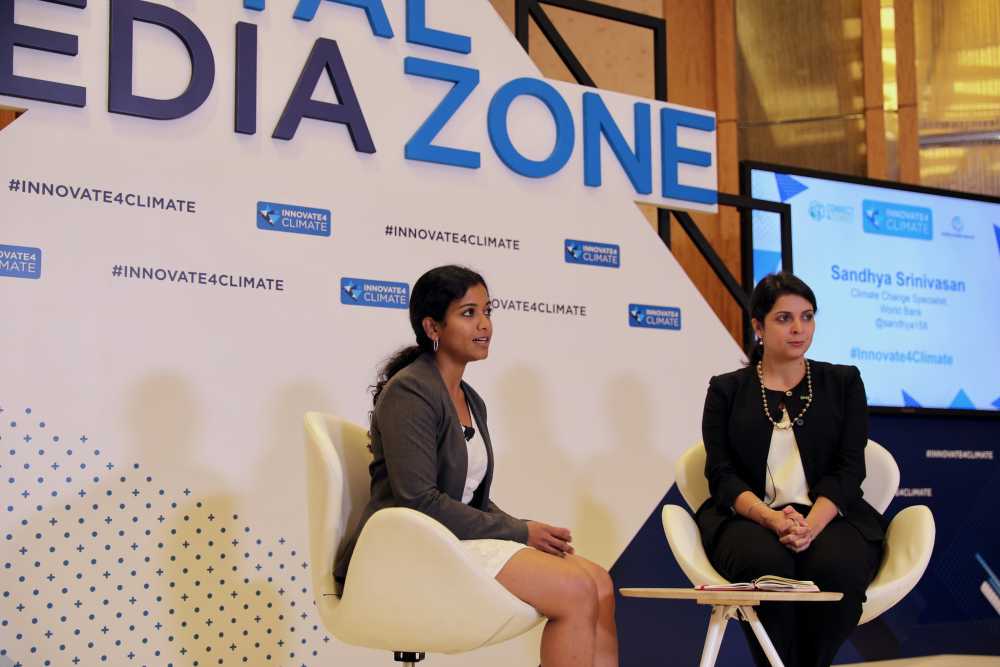
Image courtesy of Kaia Rose, Connect4Climate.
2. Participate virtually in our side events
In addition to the Digital Media Zone, Connect4Climate is putting on its own exciting side events at the COP, including a session on agricultural innovations in Africa and the sweeping Great Green Wall initiative as well as one on strategies for working alongside youth leadership to expand climate education worldwide.
Be sure to follow our coverage of the COP on Instagram, Twitter, and Facebook to stay abreast of these events and draw inspiration to take climate action yourself! Feel free to contribute your own thoughts on the issues using the hashtags #COP25, #WeAreAction and #TimeForAction.

Image courtesy of Leigh Vogel, Connect4Climate.
3. Check out the UNFCCC website
If you’d like to learn more about the COP in general and its role in global climate dialogue, look no further than the UNFCCC’s official website, which offers an overview of the conference, a schedule of events, an aggregation of relevant climate news stories, and more. You can also tune into the Action Hub webcast for a full program of exciting interactive presentations.
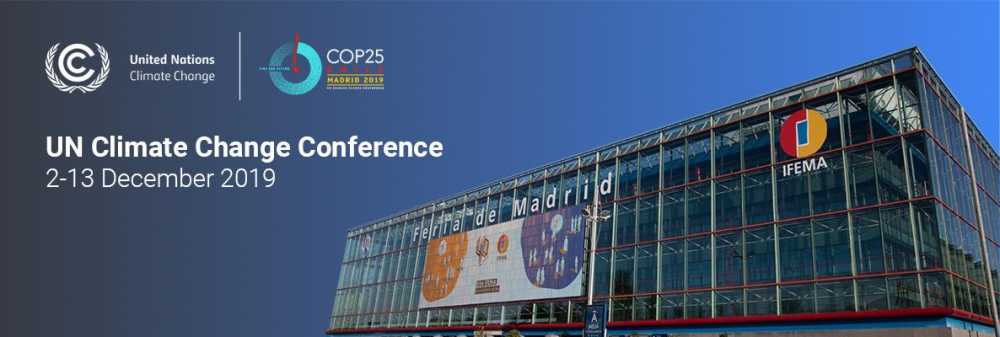
Image courtesy of the UNFCCC.
4. Bone up on Article 6 of the Paris Agreement
You’ve probably heard of the Paris Agreement on climate change, but do you know Article 6? In Katowice at last year’s COP, the parties adopted the “Paris Rulebook” but key guidance on how to implement Article 6 was not included so It’s a section of the Agreement that the parties to the UNFCCC attempted unsuccessfully to pin down at last year’s COP, and you can bet that it will be a centerpiece in Madrid this time around.
Article 6 aims to establish a system of voluntary international cooperation to make both implementing and verifying country-specific climate action plans easier. It could also pave the way for more robust climate education programs worldwide and a global standard on carbon pricing, which has the potential to cut industrial emissions significantly over the next several years. Negotiations are delicate, though, and reaching an agreement will be far from simple.
Study up on Article 6 and its significance on sites such as that of the International Chamber of Commerce and the Environmental Defense Fund or check out this video from the Carbon Pricing Leadership Coalition.
Image courtesy of the Carbon Pricing Leadership Coalition.
5. Follow #Youth4Climate leaders on social media
Last but not least, be sure to show your support for the global #Youth4Climate activist movement and keep an eye on youth leaders’ responses to the event of COP25 for a fresh viewpoint.
#SchoolStrike4Climate pioneer Greta Thunberg, who is making her way to the conference by boat, has a major presence on both Twitter and Instagram. Consider also following UN Youth Envoy Jayathma Wickramanayake, New York-based activist Alexandria Villaseñor, and Kenyan climate advocate Leah Namugerwa.
For additional ideas on youth leaders to look out for, check out this handy who’s who compiled by the BBC!

Image courtesy of Kaia Rose, Connect4Climate.
Article banner courtesy of Pixabay.
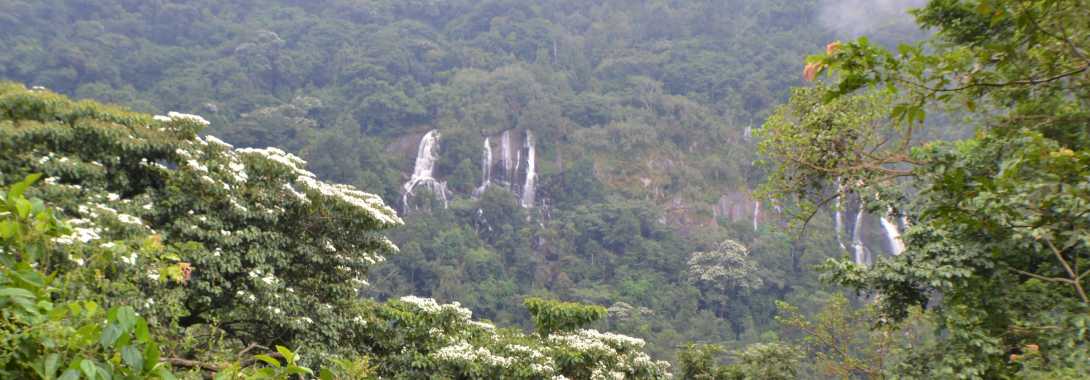
Nesredin Abdurrahman is an 18-year-old Ethiopian student who works half days as a sentinel on a reforestation site in Bufata Tiyara, Gore woreda, Oromia. He and his friend take turns watching the site to ensure that no human interference or animal grazing endangers the plants that the community are growing on their land. Thanks to technical and logistical support from the Oromia Forested Landscape Program (OFLP), more than 17,000 tree seedlings have been planted to date in two sites divided by an old airport field on the outskirts of the Gore woreda. Gore is one of 49 “deforestation hotspot” woredas in Oromia Regional State, where the BioCF Initiative for Sustainable Forest Landscape (ISFL) program is working to combat deforestation.
The program, which started in May 2017, aims to reduce greenhouse gas emissions and improve sustainable forest management in the region. The program draws on an $18 million grant to finance on-the-ground investments and is allotting Emission Reductions Payments at a rate of $5 / ton for verified emissions reductions up to 10 million tons ($50 million) through 2029. OFLP aims to bring a total of 120,000 hectares of forest area under formal forest management and reforest 9,000 hectares by 2022. After two years of implementation, investments on the ground have yielded promising results in terms of reforestation area and Participatory Forest Management (PFM): about 9.8 million seedlings have been planted over nearly 3,400 hectares in the last two rainy seasons and about 22,770 hectares of forest area have been brought under the umbrella of forest management.
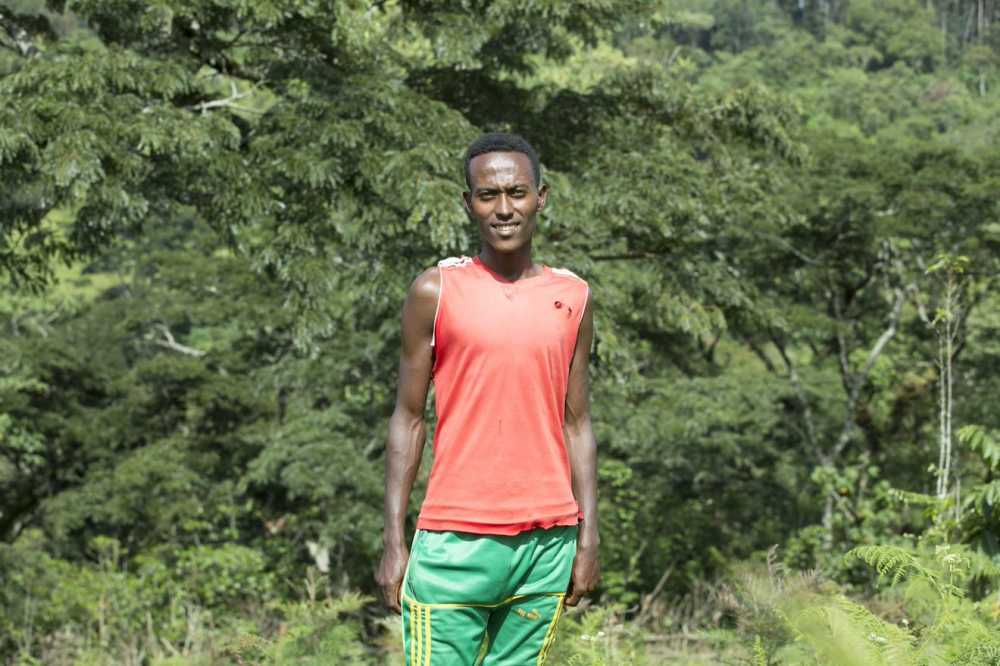
The afforestation/reforestation (A/R) activities carried out under OFLP in the Gore woreda are particularly critical because the area is situated in one of the last two relatively intact high montane forests remaining in the country— the impacts of deforestation here are likely to stretch far beyond the borders of the woreda. Absent strong action in this region, Ethiopia’s aspiration to build a green climate-resilient economy by 2030 and fulfill its Nationally Determined Contribution under the Paris Agreement (as well as other global climate commitments) could be put at risk. The Gore woreda is located in Southwest Ethiopia, home to arabica coffee as well as headwaters for the second major tributary of the Nile. It influences rainfall distribution across many areas of the country and is of vital importance to the overall ecosystem.
The forests of Illu Abba Bora in particular trap considerable reserves of carbon and are a critical source of atmospheric moisture for climate stabilization in the drought-prone Northern Highlands. Furthermore, these forests are instrumental in supporting everyday livelihoods and allowing communities to achieve climate resilience. Marginalized groups and women in particular rely heavily on natural forests for their livelihoods. In the most densely forested regions, between one third and one half of annual household income stems from forest resources.
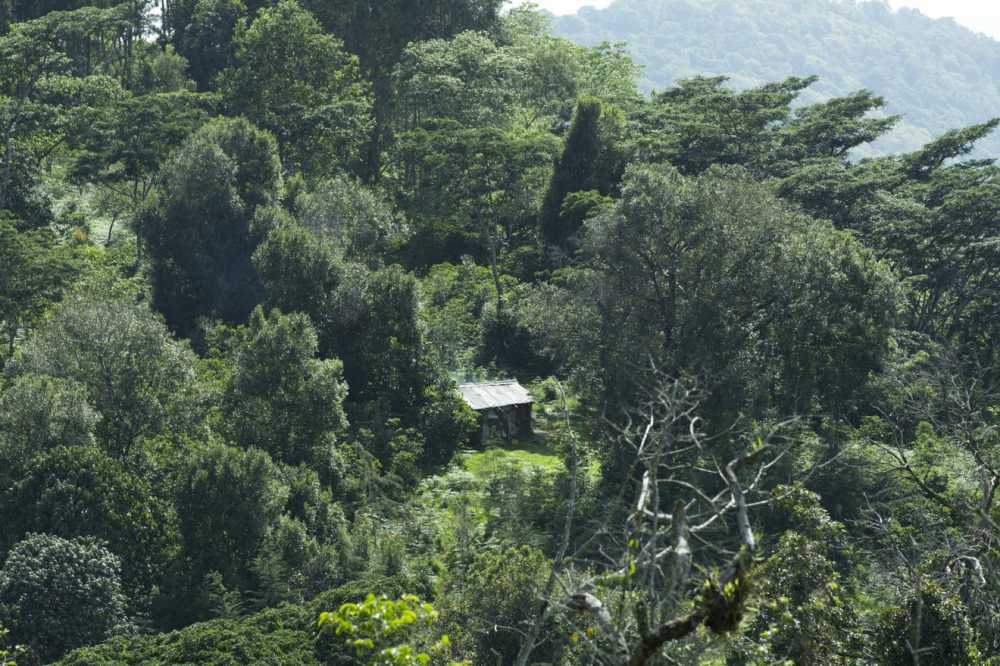
The Bufata Tiyara A/R sites are fenced to avoid animal and human interference, and the local community has established bylaws that clearly outline the fees to be paid by the owners of trespassing animals. In addition to the guards, members of the community regularly look after the seedlings until the plants are fully grown. At one of the sites, women community members have proven particularly precise in planting the seedlings and effective at taking care of them. According to Mr. Desalegn, chairperson of the community group of Bufata Tiyara-2, their commitment is exemplary: he has said they are as dedicated to nurturing the seedlings as they are to providing for their own children. For this reason, the seedlings in this site are developing fast and looking very healthy. Thanks to the A/R efforts in the region, the remains of the old trees are regenerating themselves, promising a revitalization of the natural forest and a return of all the various indigenous trees that once defined the landscape.
OFLP is supporting similar A/R activities in other hotspot woredas in Oromia, contributing to Ethiopia's ambitious national “green legacy” initiative. By the end of the rainy season this year, the government of Ethiopia had planted over 3.5 billion trees, an effort which required every citizen to sow 40 seedlings. As part of this initiative, officially launched by the Ethiopian Prime Minister on May 26, 2019, 350 million trees were successfully planted on July 29 alone. The initiative aims to increase substantially Ethiopia’s forest coverage, which according to the UN declined from 30 percent to 15.5 percent between the late 19th century and early 21st.
A leader on climate action, forests, and sustainable land management, Ethiopia set a precedent with this program. The benefits of OFLP go beyond emission reductions to include poverty reduction and resilient livelihoods, biodiversity conservation, promotion of household energy options (affecting mostly women) and water provisioning services important for the current and future energy profile of Ethiopia. This innovative approach has been already used as a model for similar programs in Colombia, Zambia, Mozambique and the DRC and has the potential to help build green legacies in countries around the world as we collectively move towards a sustainable future.
Photos by Binyam Teshome on behalf of the BioCarbon Fund Initiative for Sustainable Forest Landscapes.
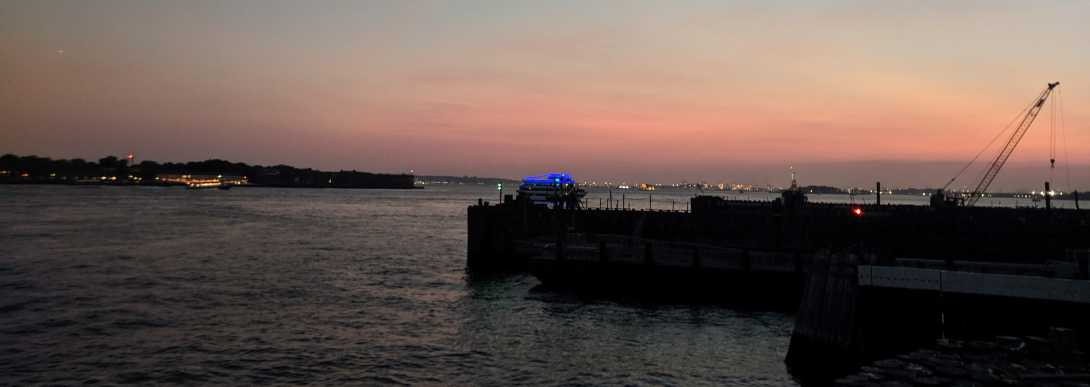
It was a busy morning with Connect4Climate's #YouthTakeover team at the UN Youth Climate Action Summit. There was a collective interest shared among event goers; it truly felt like momentum towards a sustainable future was picking up in a major way. One aspect of the event that sparked conversation was the Pollution Pods installation created by artist Micheal Pinky. The interactive experience took less than ten minutes to walk through and used physical and chemical effects to give those who doubt the legitimacy of the warming effects of greenhouse gas emissions a new perspective. Pods simulated air quality from London, New Delhi, Beijing, São Paulo, and Oslo, immersing participants in these environments.
The replications in each pod tailored the various concentrations of pollutants such as carbon dioxide, sulfur dioxide, ozone, nitrous oxide, and particulate matter to make it feel like you were on the street in the center of each city. When users would leave the simulation, they would appreciate the cool breeze coming off the river just that much more. As things were beginning to wrap up for the day, an environmentalist colleague and I were afforded the opportunity to make our way to the High-Level Commission on Carbon Pricing event being held nearby.
Carbon pricing acknowledges the steep human and environmental cost of industrial pollution and shifts that cost, usually shouldered by tax-paying citizens, to polluters themselves. Under this system, if a company elects to include fossil fuels in its business model, it must pay upfront to account for the damage the resulting greenhouse gases will cause down the line. Pricing carbon emissions at the source using a set price per metric ton can make market shifts more predictable and send a clear and consistent message to investors and business leaders.
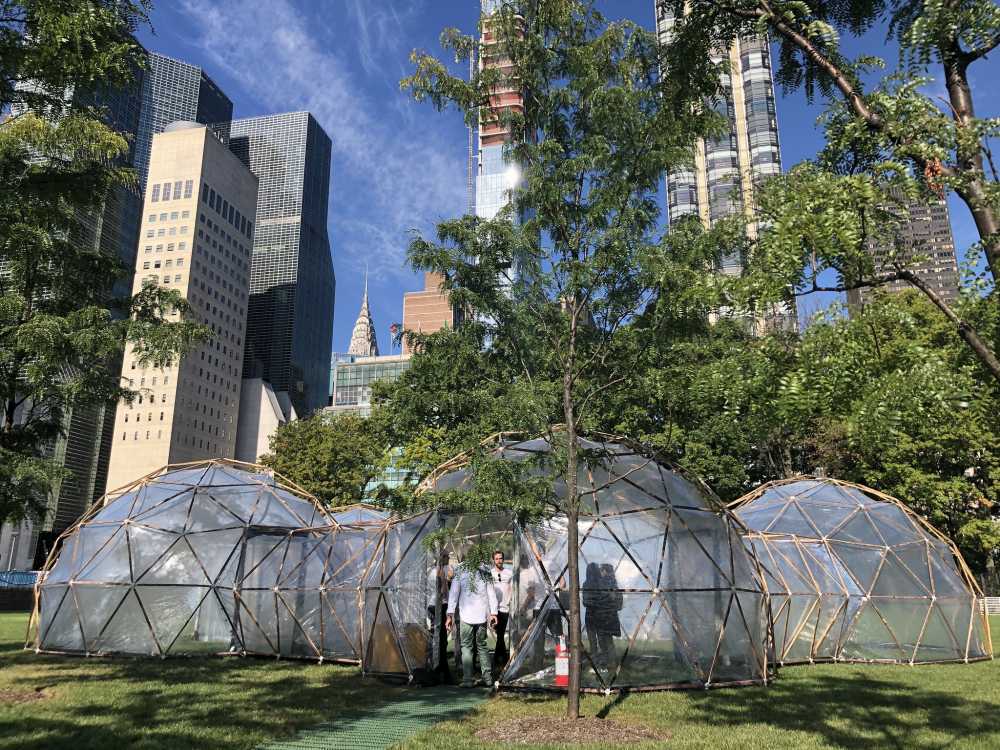
Michael Pinky's Pollution Pods installation. (Nicole Provost, #YouthTakeover Team)
Carbon pricing never works as a stand-alone measure, but rather as a piece in the much larger puzzle we are now calling a “greener future.” I was surprised to learn that 40 governments worldwide have adopted a price on carbon and that within the United States there are ten states that have already committed or made a future commitment to pricing carbon. In some scenarios a cap and trade mechanism was a viable option both politically and economically. In other scenarios, like in British Columbia, a tax system was put in place. Regardless, the result was a rapid decline of coal usage solely due to the fact that running costs for these plants were no longer competitive with the price of renewables (natural gas, for instance, is almost 20 dollars cheaper per megawatt hour than coal).
These carbon pricing systems are being used globally to cut economic losses while making environmental gains. Their success in incentivizing power plants to move away from the high emissions of fossil fuels will one day serve as a template for cutting emissions in other major industries, such as maritime shipping, the aviation sector, and concrete and steel production. One concern of some industrial players is that these restrictions on corporations’ productivity could harm their competitiveness by pushing investments into other countries or states where there is no price on carbon. Industry leaders came together at the High-Level Commission event to dispel these fears and make clear that pricing carbon will not hinder economic growth.
The new report launched by the High-Level Commission on Carbon Pricing and Competitiveness during the UN Climate Action Summit in New York concludes that carbon pricing is not going to decrease competitiveness or drive business out. By convening multiple panels, all filled with intelligent industry, academic, and policy experts, the event painted a clear picture of an economy that can flourish against a carbon-priced backdrop. The panelists suggested that loss of market share and profits will actually primarily affect those in the economy who wish to continue to fight against low-emission alternatives.
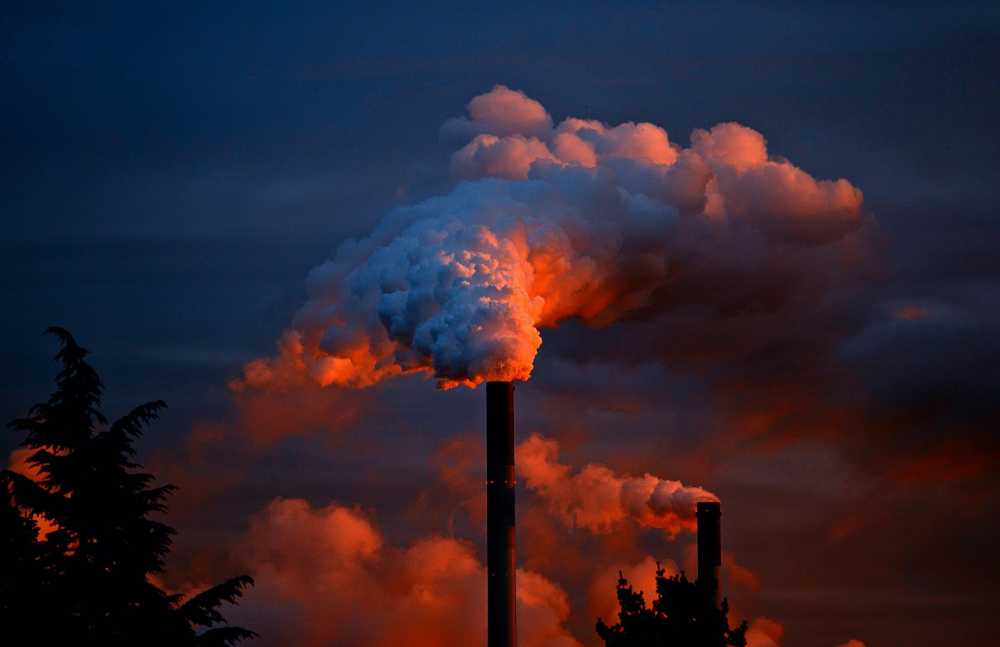
Carbon pricing ensures the cost of pollution is borne by polluters. (JuergenPM, Pixabay)
The panelists agreed that those states that are hesitant about putting a strong price on carbon will suffer in the long run. The concern internationally for competitiveness is minimal since eventually carbon prices will balance out worldwide, making the benefit of moving production insignificant. Another point that panelists stressed was that, regardless of whether governments have set national carbon prices yet, businesses need to set a price on carbon internally. This will help companies smoothly transition into a carbon-priced scenario and future-proof their business.
The consensus was that unlocking the potential of the private sector will be a critical factor in reducing carbon emissions. I found it particularly interesting when data was presented to suggest that pricing carbon has actually driven innovation, investment, and growth. Consumers are becoming proactive in their environmental awareness and beginning to put their money where their mouth is when determining which product or service to purchase. The data shows that consumers will stand by companies and corporations that do right by the environment before worrying about their bottom line. This means that consumers and business leaders alike are poised to enter a cleaner tomorrow.
We consumers are becoming increasingly aware of how the market will react to our wants and needs. We want companies to act in a sustainable manner. As a learner, I was fascinated by the economic principles that were explained that day; I am sure that I and everyone else in that room learned something new. More importantly, experts in the room clearly got their point across: there is no future that does not include a price on carbon.
Banner image courtesy of Jessica Schlimmer, #YouthTakeover Team.
